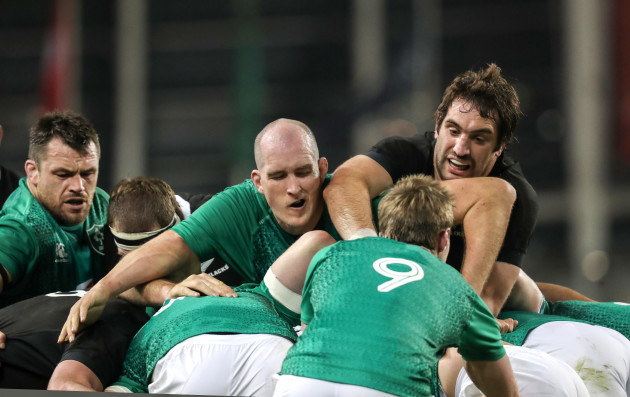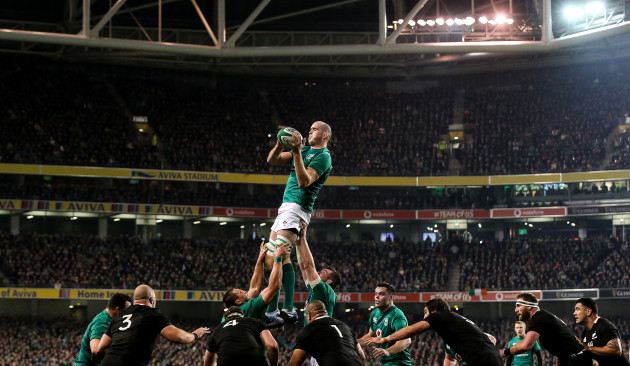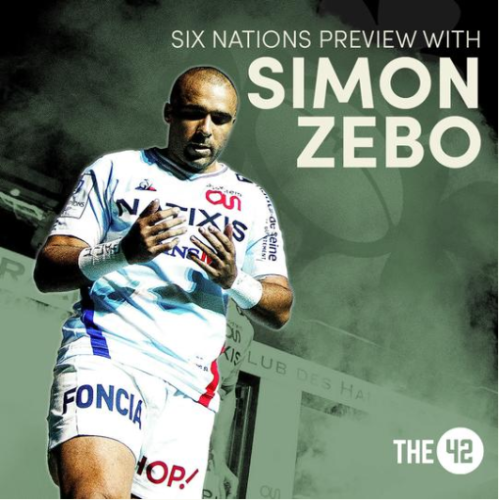DEVIN TONER HAS a few favourite lineouts but one that comes readily to mind for him is an effort against South Africa in November 2014.
A deeply intelligent play that led to a try for Rhys Ruddock that day against the Boks – who have long been renowned for their lineout and maul play – brought great satisfaction.
That was a particularly noticeable try but much of the good work that goes on at the lineout tends to go unnoticed at other times.
Indeed, the lineout often comes to attention far more when it’s stuttering. When a caller like Toner is directing a smooth-sailing ship out of touch to provide clean possession for their team, it is regularly underappreciated.
Joe Schmidt is certainly a coach who doesn’t underestimate the value of a cleanly-operating lineout, given his genius for creating set-piece strikes off this platform.
Indeed, 45% of Ireland’s tries in last year’s Grand Slam originated from the lineout, with that percentage having been very steady since Schmidt took over in 2013.
With 32-year-old Toner rated as a calm and intelligent lineout caller – the man who decides exactly which lineout Ireland will use at each moment in the game – this is one reason he has been such an important figure under Schmidt.
It’s a demanding task, but one that Toner relishes as he works with his out-halves to produce the most ideal ball from the lineout.
“I always find the first lineout of the game the most nerve-wracking,” says the Meath man. “So, I’d be going to Johnny [Sexton] or Ross [Byrne] to see what play we want.
“The first lineout of the game, [the opposition] have studied us and will present a defensive line against us and try and win it. The first movement, the first call, is always the most nerve-wracking.
“After that, we can say, ‘Alright – that call’s not on, that call’s not on, that one is on’… you can see where their defenders are.
“But, I wouldn’t be thinking about it during play. It’s the little stops in play when someone goes down, I’d have a chat with some of the back row, ask them what’s going on behind me or someone in front of me will see… because the more you speak to each other about it, the more you’re able to win ball.
“So, it evolves during the game when you see how they defend.”
Toner taps his head mischievously when asked where Ireland’s lineout calls and plays are stored, but the analysis computers at Carton House certainly hold reams of footage of how Ireland’s lineout can set up and alter itself.
Intriguingly, Paul O’Connell – Toner’s predecessor as Ireland’s frontline caller – recently told Off the Ball that much of Ireland’s lineout system was built by Leo Cullen after his return to Leinster in 2007 from a two-year stint in Leicester.
The introduction of ‘bailouts’ – late changes to the initial call in reaction to the defensive lineout’s set-up – was particularly important.
“It has very, very much evolved over time,” says Toner.
“Leo went off, I’m not sure who he learnt it with – it could have been Ben Kay or whoever he was with at Leicester – but he came back and we started using it with Leinster.
“It’s not particular movements, it’s how you call them aloud – having bailouts. There were never any bailouts before that. The calls, the different names for the calls, have changed over time.
“It has evolved so much, each caller puts their own stamp on it.
“Leo had his stamp, Pauly had his, and so it evolved. We bring in different movements, but how you call it was the new thing he brought in.”
Being the lineout caller involves huge hours of analysis work, with Toner keen to learn everything he can about the opposition during the weeks leading up to games.
That feeds into Ireland’s defensive work too, with Toner and his fellow set-piece operators looking to glean insight that can help them to make game-changing lineout steals.
In that sense, the presence of Peter O’Mahony is particularly useful, with the strong, springy flanker so adept at leaping at the front of the defensive lineout.
Toner says O’Mahony is one of the best in the world at ‘mirroring’ in the lineout, matching up to the opposition’s key jumpers and moving along the ground as they do before competing in the air.
“He needs to be lifted as well so it’s very important for whoever is in that lifting role – the props or maybe the number eight – to read who he needs to lift,” says Toner in underlining how much of a collective duty the lineout is.
“So, yeah, it’s a very big strength of Pete’s – he might only need a one-man lift from behind to get in the air. It’s a strength of his, a strength of James Ryan’s as well – he’s able to spring.”
Toner is anticipating a ferocious lineout battle again this weekend as the fired-up England visit Dublin, when he will be a key figure yet again.
Despite more than 60 caps and his ultra-calm demeanour, this one means as much as any game to him.
“I don’t think you’d ever take anything for granted. Every cap is different, every cap is special, to be honest,” he says.
“Especially being at the tail end of my career, the more I play the more special it gets. Obviously, I’ve got little Max [his son] in the crowd, my family, and you want to do them proud.
“I’m very much aware that I don’t have that many more years left in me, so I want to make every one special.”
Join us to preview the Six Nations with Simon Zebo, Murray Kinsella and Gavan Casey on Thursday @7pm in Liberty Hall Theatre Dublin.




